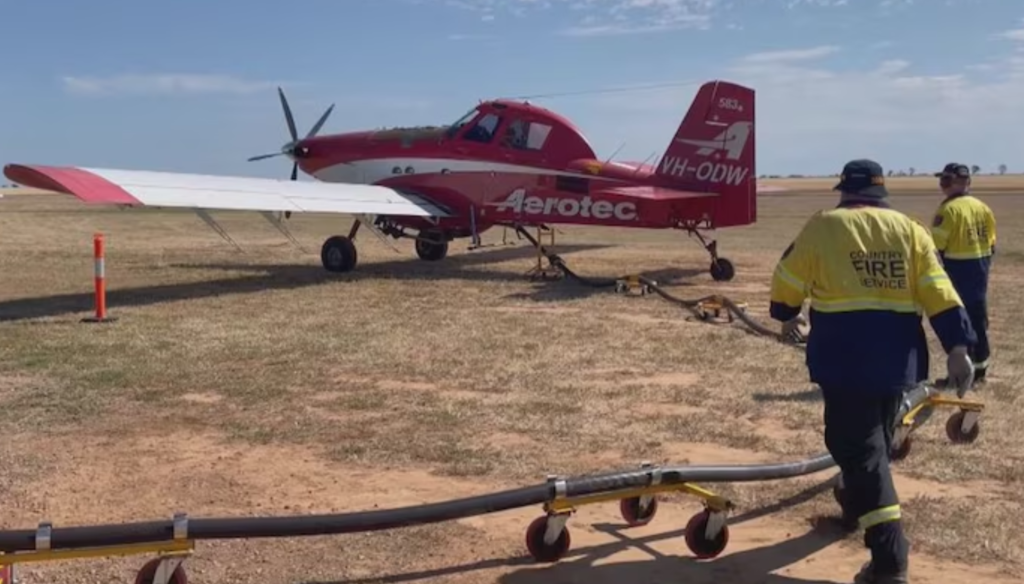Australia is expanding its aerial firefighting fleet to include multi-use aircraft to respond not just to fires but also to natural disasters such as floods and major storms.
abc.net.au reported that longer and overlapping fire seasons are increasing pressure on the country’s firefighting fleet. The new federal budget includes an extra $35 million to source more multi-use aircraft, while a national audit is underway to ensure Australia has the capacity to meet building demand.
National Emergency Management Authority (NEMA) deputy coordinator general Joe Buffone said recent fire seasons illustrated the demand for more versatile aircraft.
“The key focus is to broaden the fleet so that it’s multi-use,” said Buffone. “This means aircraft will be able to be changed around so they can do evacuation, resupply, support remote communities, and help other emergencies way beyond just fire.”
NEMA reports that the Australian government will ensure that the country is better prepared by funding more aircraft to respond to fires, floods, and other severe weather events.
 Through the 2024-25 budget, the government will provide an additional $35 million over the next two years to the National Aerial Firefighting Centre (NAFC), for delivery of national, state and territory aircraft for fire and emergency services. This investment will provide a range of aerial assets, from specific firefighting aircraft to a mix of fixed-wing and rotary multi-use aircraft, boosting protection for communities as they face more intense, frequent, and concurrent disasters.
Through the 2024-25 budget, the government will provide an additional $35 million over the next two years to the National Aerial Firefighting Centre (NAFC), for delivery of national, state and territory aircraft for fire and emergency services. This investment will provide a range of aerial assets, from specific firefighting aircraft to a mix of fixed-wing and rotary multi-use aircraft, boosting protection for communities as they face more intense, frequent, and concurrent disasters.

Australian Flying reported last month that Aerial Application Association of Australia (AAAA) CEO Matt Harper welcomed the news that the government will spend $35 million through NAFC in support of aerial firefighting. The funding will help establish a sovereign aerial capability, as recommended by the Royal Commission into National Natural Disaster Arrangements, and it’s expected to ease pressure on military personnel and firefighting aircraft.

Harper said AAAA members invest heavily in their helicopters and SEATs, and they employ and train pilots, ground support, and mechanics. He added that because Australian firefighting expertise is internationally recognized, many of their members are headed to the northern hemisphere for the summer fire season. “Any consideration of future capability will need to balance speed and accuracy with cost and sustainability,” said Harper, “and we look forward to continuing to work with NAFC to demonstrate the vital role of Australian owned, crewed, registered, and maintained aircraft.”
Murray Watt, Minister for Emergency Management, said the increased funding boosts the government’s total contribution to national aerial capability to approximately $48 million a year.
As of March 2024 the fleet comprises 162 aircraft, including:
- 6 large fixed-wing airtankers
- 15 heavy helicopters
- 70 medium and light helicopters
- 56 fixed-wing airtankers
- 15 light fixed-wing aircraft
The fleet is supplemented by additional state-owned and state-contracted aircraft hired for peak demand periods. In total more than 500 aircraft, provided by over 150 operators, are available for firefighting across Australia.
“With this investment, we are not only increasing the number of aircraft available,” said Minister Watt, “but also broadening the type of aircraft so they can be used for different activities such as heavy lift, transportation and evacuations, and resupply operations.” He added that international requests for crewed aircraft are likely to increase as fire seasons in the northern hemisphere expand — enough that their season and the Australian fire season are overlapping now in higher-risk climate and extreme weather.

Buffone said the investment should reduce the need for the Australian Defence Force to step in during disasters. “There are some pressures on the system,” he explained. “We’ve got the northern hemisphere that quite often overlaps with the southern hemisphere season, so there’s more demand on aircraft. We’re trying to make sure we can actually have aircraft for aerial firefighting and for other emergencies.”
Most but not all of the aircraft contracted under NAFC are Australian-owned and registered, including several large airtankers, 15 large helicopters that can carry up to 11,000 litres (~3000 gallons), along with a mix of smaller rotary-wing aircraft.

Country Fire Service state aviation operations manager Nik Stanley said South Australia deployed its largest-ever firefighting fleet last summer.
“We had 31 aircraft for this season and we have that number for the next four seasons to come,” he said. “We are continuously evaluating our fleet, every year … looking at the capabilities that we have available, are they still suitable for us moving forward.”

